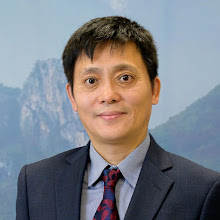Tiejun Tang
Many of my patients report of being clinically diagnosed with vitamin D
deficiency. Many of which have dismissed this as a “minor” condition, due to
symptoms being mild or non-life threatening. However, I believe we should pay
due attention to the early onset of signs and symptoms because if left
untreated it can lead to chronic health issues.
Below are some questions I have been asked by my clients and my answers
as follows:
Q: Do I have vitamin D deficiency?
A: If you often feel lethargic, tired, experience non specific aches and
pains, with a general sense of being unwell, this could be a sign of vitamin D
deficiency.
In addition, if you
are in a job, i.e. office worker, with minimal exposure to natural sunlight; or
that your current health condition / constitution (i.e. women of menopause age
or above) you maybe at increased risk of developing VD. It is advised that you
book an appointment with your General practitioner to have your blood VD level
checked.
Statistic shows
that 90% of the obese population, in the UK, has VD deficiency [1].
The South Asian community in the UK have a higher
prevalence of VD deficiency compared to the White English population, due to different
lifestyle[2].
Q: Do I need any treatment?
A: The early stage of VD deficiency can present with non to mild
symptoms, which can be easily overlooked as a “minor” problem.
The main function of VD is regulating the calcium and phosphorus
metabolism and plays a key role in
osteoporosis in adults and rickets in children. A recent study from Cambridge,
found that VD is a custodian of cell signaling stability in health and
disease. It contributes to many human diseases, such as Alzheimer's
disease (AD), Parkinson's disease (PD), multiple sclerosis (MS), hypertension
and cardiovascular diseases [3]. If you have VD
deficiency, this can increase your risk of developing serious illness (listed
above).If you are experiencing mild signs and symptoms, it is advised that you check
your VD level and if necessary to start early treatment, in order to re-balance
your calcium and phosphate levels.
Q: How to treat VD insufficiency?
A: Vitamin D deficiency in Western medicine is usually treated in the
form of artificially manufactured oral supplements (solutions or capsules),
which are available for purchase over the counter. Unfortunately, the general
public often self administer vitamin D, without knowing the recommended intake
and this can result in high to toxic 25-hydroxyvitamin D levels [4].
A randomised, placebo controlled clinical trial report showed calcium
supplementation in healthy postmenopausal women is associated with upward trends
in cardiovascular event rates. This is potentially detrimental to health and
should be carefully weighed against the likely benefits of calcium on bone
health[5]. It is in my opinion, based upon my extensive clinical
experience, the safest treatment for VD deficiency, should be naturally derived
e.g. regulate diet, lifestyle and the use of natural herbal medicine and
acupuncture.
Q: What is Chinese medicine’s opinion on VD deficiency?
A: According to Traditional Chinese Medicine theory, the Kidneys dominate
bone, growth and regeneration. Bone health (strength and density) depends on the
quality of Kidney Essence. Vitamin D is first absorbed via the skin (from
sunlight) and transported and metabolized in the Liver. However, hyrdroxylation
(the first step of degradation of organic compounds) in the liver is only
capable of producing 25 hydro vitamin D3, which is almost inactive. Compared
with the kidneys ability to activate 25-hydroxycholecalcifero into
1,25-dihydroxycholecalciferol, it is endogenous vitamin D3 (1000x higher than
its almost inactive form in the liver).The aetiology behind vitamin D
deficiency is due to Kidney deficiency, from a TCM perspective.
For further reading on “Kidney dominate bone theory,” please reference
my previous publication..
Q: How to treat VD deficiency in Chinese medicine?
A: Any kidney tonification method can benefit VD. These include the use
of acupuncture treatment, focusing on the following key kidney meridian points,
eg. KI 3, KI 6, BL23, DU4, applying reinforce manipulation. Kidney tonifying
herbs can be selected according to the principle of syndrome differentiation diagnosis.
For example, for Kidney Yin deficiency, use modified Liuwei Dihuang Wan. For
Kidney Yang disharmony, use modified Jingui Shenqi Wan.
To conclude, Chinese medicine has a ‘two way regulation effect.’ The use of Chinese
herbal medicine and acupuncture can effectively balance the kidney yin/yang,
which governs and stimulates the body's natural production of vitamin D and
calcium. The use of artificially manufactured Vitamin D and calcium supplements
can, therefore, be avoided, preventing VD toxicity.
Kidney tonifying
herbs contain active ingredients and compounds used for maintaining health and
preventing premature aging for millennia. In ancient China, from Emperors to ordinary civilians, regardless of
social rank, everybody enjoyed reaping the benefits of consuming kidney
tonifying pills and decoctions.
Reference:
1. Grace C. High prevalence of vitamin D insufficiency in a United Kingdom
urban morbidly obese population: implications for testing and
treatment. SurgObesRelat Dis. 2014;10(2):355-60.
2. Kift R. Lifestyle factors including less cutaneous sun exposure
contribute to starkly lower vitamin D levels in U.K. South Asians compared with
the white population. Br J
Dermatol. 2013;169(6):1272-8.
3. Berridge MJ. Vitamin D: a custodian of cell signalling stability in health and
disease. BiochemSoc Trans. 201; 43(3):349-58.
4. Shea R. ANNALS EXPRESS: Self-administration of Vitamin D
supplements in the general public can result in high to toxic 25-hydroxyvitamin
D levels. Ann ClinBiochem. 2016; 15.
5. Mark J Bolland. Vascular events in healthy older women receiving calcium
supplementation: randomised controlled trial.BMJ. 2008; 336(7638): 262–266.





